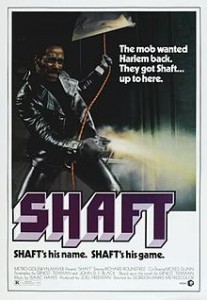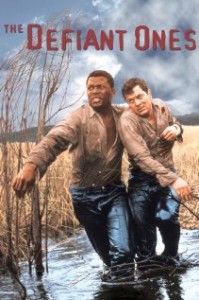The Black Reel Awards Nominates “Registry of Honor” Historic Films
Posted on May 12, 2012 at 8:00 am
 The Black Reel Awards pay tribute each year to the greatest achievements in film featuring African-American actors, directors, and screenwriters. Now they have looked back in history to nominate candidates for a “registry of honor” to bring attention to the most significant achievements of African-American filmmakers from the silent era to the present. The list of nominees includes established classics and some neglected gems. Take a look — I’d be glad to hear your favorites, especially anything they’ve overlooked. Only five will be selected each year, but I am confident that most, if not all of these will make it to the roster eventually.
The Black Reel Awards pay tribute each year to the greatest achievements in film featuring African-American actors, directors, and screenwriters. Now they have looked back in history to nominate candidates for a “registry of honor” to bring attention to the most significant achievements of African-American filmmakers from the silent era to the present. The list of nominees includes established classics and some neglected gems. Take a look — I’d be glad to hear your favorites, especially anything they’ve overlooked. Only five will be selected each year, but I am confident that most, if not all of these will make it to the roster eventually.
A Natural Born Gambler (1916)
A lovable scoundrel is busted for gambling and thrown into jail, where he dreams of playing poker – but even in his dreams, he loses.
Within Our Gates (1920)
Abandoned by her fiancé, an educated Negro woman with a shocking past dedicates herself to helping a near bankrupt school for impoverished negro youths. Produced, written and directed by novelist Oscar Micheaux, it is the oldest known surviving feature film made by an African-American director.
Body and Soul (1925)
An escaped prisoner poses as a minister to steal from the community. Paul Robeson, in his film debut, plays the prisoner and his twin brother.
Hallelujah! (1929)
In a juke joint, sharecropper Zeke falls for a beautiful dancer, Chick, but she’s only setting him up for a rigged craps game. Hallelujah! was King Vidor’s first sound film, and combined sound recorded on location and sound recorded post-production in Hollywood. King Vidor was nominated for a Best Director Oscar for the film.
Hearts in Dixie (1929)
The story unfolds as a series of sketches of life among American blacks. It featured characters with dignity, who took action on their own, and who were not slaves. The film was one of the first all-talkie, big-studio productions to boast a predominantly African-American cast.
The Emperor Jones (1933)
Unscrupulously ambitious Brutus Jones escapes from jail after killing a guard and through bluff and bravado finds himself the emperor of a Caribbean island.
Murder in Harlem (1935)
A black night watchman at a chemical factory finds the body of a murdered white woman. After he reports it, he finds himself accused of the murder.
The Green Pastures (1936)
God, heaven, and several Old Testament stories, including the Creation and Noah’s Ark, are described supposedly using the perspective of rural, black Americans.
Swing! (1938)
Ted Gregory is trying to be the first black producer to mount a show on Broadway, but he has trouble with his star singer.
The Bronze Buckaroo (1939)
Bob Blake and his boys arrive at Joe Jackson’s ranch to find him missing. Slim cheats Dusty out of his money using ventriloquism and marked cards. Black cowboy star Herb Jeffries plays the lead.
Broken Strings (1940)
After noted violinist Arthur Williams suffers a hand injury which ends his playing career, his hopes are transferred to his son, who prefers swing music to classical.
Son of Ingagi (1940)
A newlywed couple is visited by a strange old woman who harbors a secret about the young girl’s father.
The Blood of Jesus (1941)
An atheist accidentally shoots his Baptist wife. She dies and goes to a crossroads, where the devil tries to lead her astray.
Cabin in the Sky (1943)
A compulsive gambler dies during a shooting, but he’ll receive a second chance to reform himself and to make up with his worried wife.
Stormy Weather (1943)
The relationship between an aspiring dancer and a popular songstress provides a retrospective of the great African American entertainers of the early 1900s.
Go Down, Death! (1944)
The owner of a juke joint arranges to frame an innocent preacher with a scandalous photograph, but his scheme backfires when his own adoptive mother interferes.
Dirty Gertie From Harlem, U.S.A. (1946)
A sexy, enticing dancer from Harlem makes things happen in a sleepy Caribbean island resort.
Intruder in the Dust (1949)
In 1940s Mississippi two teenage boys and an elderly woman combine forces to prevent a miscarriage of justice and clear a black man of a murder charge.
Pinky (1949)
Pinky, a light skinned black woman, returns to her grandmother’s house in the South after graduating from a Northern nursing school and passes as white.
No Way Out (1950)
A black doctor is assigned to treat two racist white robbery suspects who are brothers, and when one dies, it causes tension that could start a race riot.
Carmen Jones (1954)
Dorothy Dandridge stars in a ontemporary version of the Bizet opera, with new lyrics and an African-American cast.
Blackboard Jungle (1955)
A new English teacher at a violent, unruly inner-city school is determined to do his job, despite resistance from both students and faculty.
Anna Lucasta (1958)
In 1959, United Artists produced a film version of Anna Lucasta starring Eartha Kitt as Anna Lucasta. Sammy Davis, Jr. co-stars.
 The Defiant Ones (1958)
The Defiant Ones (1958)
Two escaped convicts chained together, white and black, must learn to get along in order to elude capture.
Black Orpheus (1959)
A retelling of the Orpheus and Eurydice myth, set during the time of the Carnival in Rio de Janeiro.
Odds Against Tomorrow (1959)
Dave Burke is looking to hire two men to assist him in a bank raid: Earl Slater, a white ex-convict…
Porgy and Bess (1959)
In this legendary Gershwin opera set among the black residents of a fishing village in 1912 South Carolina, a crippled man falls for a beautiful woman.
A Raisin in the Sun (1961)
A substantial insurance payment could mean either financial salvation or personal ruin for a poor black family.
Lillies of the Field (1963)
An unemployed construction worker (Sidney Poitier) heading out west stops at a remote farm in the desert to get water when his car overheats and ends up building a school for a group of German refugee nuns. Poitier became the first black man to win a Best Actor Oscar for his performance.
Nothing But a Man (1964)
A proud black man and his school-teacher wife face discriminatory challenges in 1960s America.
Guess Who’s Coming to Dinner (1967)
Matt and Christina Drayton are a couple whose attitudes are challenged when their daughter brings home a fiancé who is black.
In the Heat of the Night (1967)
An African American detective is asked to investigate a murder in a racist southern town.
The Learning Tree (1969)
The story, set in Kansas during the 1920’s, was inspired by the real-life experiences of director Gordon Parks.
Shaft (1971)
Cool black private eye John Shaft is hired by a crime lord to find and retrieve his kidnapped daughter.
Sweet Sweetback’s Baadassssss Song! (1971)
After saving a Black Panther from some racist cops, a black male prostitute goes on the run from “the man” with the help of the ghetto community and some disillusioned Hells Angels.
Buck and the Preacher (1972)
A wagon master and a con-man preacher help freed slaves dogged by cheap-labor agents out West.
Lady Sings the Blues (1972)
The story of the troubled life and career of the legendary Jazz singer, Billie Holiday.
Sounder (1972)
The son of a family of black sharecroppers comes of age in the Depression-era South after his father is imprisoned for stealing food.
Coffy (1973)
Coffy, an African American nurse, takes vigilante justice against inner city drug dealers after her sister becomes their latest victim.
The Spook Who Sat By the Door (1973)
A black man plays Uncle Tom in order to gain access to CIA training, then uses that knowledge to plot a new American Revolution.
Uptown Saturday Night (1974)
Steve Jackson and Wardell Franklin sneak out of their houses to visit Madame Zenobia’s: a high-class but illegal nightclub, and have some wild adventures.
Cooley High (1975)
In the mid-1960’s, a group of high school friends who live on the Near North Side of Chicago have various adventures, comic, scary, and serious, as they learn some lessons about responsibility and growing up.
Killer of Sheep (1979)
Stan works in drudgery at a slaughterhouse. His personal life is drab and he feels suffocated. Dissatisfaction and ennui keep him unresponsive to the needs of his devoted wife.
48 Hrs. (1982)
A hard-nosed cop reluctantly teams up with a wise-cracking criminal temporarily paroled to him, in order to track down a killer.
Sugar Cane Alley (1983)
In Martinique, in the early 1930s, young José and his grandmother live in a small village where nearly everyone works cutting cane.
A Soldier’s Story (1984)
An African American officer investigates a murder in a racially charged situation in World War II.
Beverly Hills Cop (1984)
A freewheeling Detroit cop pursuing a murder investigation finds himself dealing with the very different culture of Beverly Hills.
The Color Purple (1985)
The life and trials of a young African American woman.
She’s Gotta Have It (1986)
A strong, independent woman has three lovers in this ground-breaking film from Spike Lee.
Hollywood Shuffle (1987)
An actor limited to stereotypical roles because of his ethnicity dreams of making it big as a highly respected performer. As he makes his rounds, the film takes a satiric look at African American actors in Hollywood.
